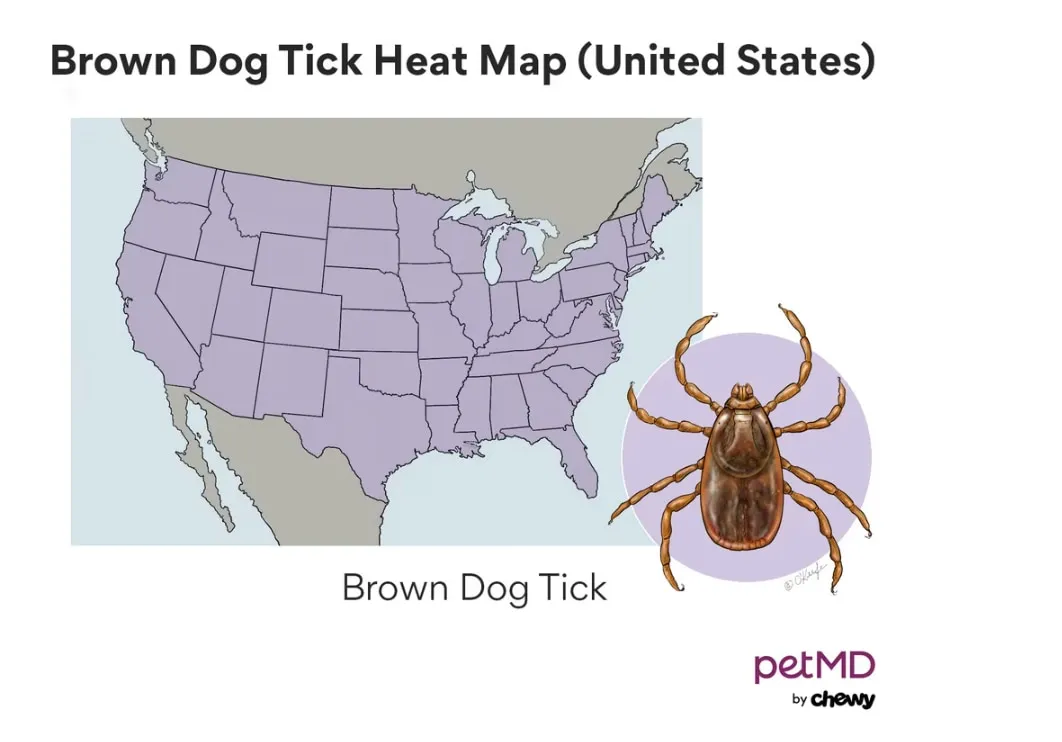Keeping your canine companion safe and healthy is a top priority for any dog owner. Proactive preventative care is paramount, and one of the most crucial aspects of this is consistently using monthly flea and tick preventatives. These tiny parasites are not just a nuisance; they can transmit serious diseases to your dog and even pose a threat to human health. Understanding the best over-the-counter flea and tick medication for dogs can empower you to make informed decisions for your pet’s well-being.
Fleas and ticks are ectoparasites, meaning they live on the exterior of their host and feed on blood. Flea bites can lead to severe allergic reactions, dermatitis, anemia, intense itching, and secondary infections. Tick bites, on the other hand, can transmit a range of dangerous diseases such as Lyme disease, Rocky Mountain spotted fever, ehrlichiosis, and anaplasmosis. Some of these diseases can even be passed to humans, highlighting the importance of vigilant prevention for both your pet and your family.
To effectively protect your dog, it’s vital to start flea and tick prevention around 8 weeks of age and continue year-round. The environment your dog inhabits, their specific breed characteristics, and any pre-existing medical conditions all play a role in selecting the most suitable treatment.
Understanding Flea and Tick Prevention for Dogs
The market offers a variety of products designed to combat fleas and ticks. These often fall into categories like pesticides, repellents, or growth inhibitors, each targeting different stages of the pest’s life cycle. While some products focus solely on fleas, combination treatments are often more effective, tackling various pest types and sometimes offering additional protection against heartworms, ear mites, and intestinal parasites. For instance, Credelio Quattro is recognized for its broad spectrum of parasite coverage.
Key Factors in Choosing Flea and Tick Medication
When selecting the best over-the-counter flea and tick medication for dogs, several factors warrant careful consideration:
1. Application Method
- Oral: These are typically chewable tablets that are easy to administer, often resembling a treat. However, it’s crucial to ensure your dog consumes the entire tablet to guarantee absorption and efficacy.
- Topical: Applied as a liquid between the shoulder blades or along the back, topical treatments are a good alternative for dogs with sensitive stomachs or those who are difficult to medicate orally. However, caution is advised in households with young children or other pets who might come into contact with the application site before it dries. Topical treatments can also be less effective for dogs that swim frequently or require regular bathing, as water can diminish their potency.
 Dog being given a flea and tick chewable tablet
Dog being given a flea and tick chewable tablet
2. Geographic Location and Parasite Prevalence
Parasite populations vary significantly by region. Consulting resources like the Companion Animal Parasite Council can provide insight into the specific fleas and ticks prevalent in your area, helping you choose a product with targeted efficacy.
3. Lifestyle and Outdoor Exposure
Dogs that frequently explore parks, hiking trails, or wooded areas face a higher risk of encountering fleas and ticks. Even indoor dogs can be exposed through contact with other pets, or via fleas hitching a ride on clothing or shoes. Therefore, year-round prevention is recommended for all dogs, regardless of their outdoor habits.
4. Breed-Specific Considerations (MDR-1 Gene)
Certain breeds, such as Collies, Australian Shepherds, and Shetland Sheepdogs, may carry a gene mutation (MDR-1) that affects their ability to metabolize certain medications. Veterinarians often recommend testing for this gene mutation. Fortunately, many manufacturers have conducted safety testing on their products for dogs with this mutation, finding no adverse effects.
5. Age and Size
Puppies and smaller breeds require specific formulations that align with their weight and age. Most flea and tick preventatives are suitable for dogs 8 weeks and older, but always verify the product’s minimum age and weight requirements. For instance, Revolution Topical Solution for Kittens and Puppies is formulated for younger pups.
6. Existing Medical Conditions
Dogs with a history of seizures or neurological disorders should be treated with extreme caution when using isoxazoline-class preventatives, as these medications may potentially increase the risk of seizures. It is imperative to consult your veterinarian before using any preventative if your dog has a history of adverse reactions, is ill, underweight, pregnant, nursing, or intended for breeding.
Over-the-Counter vs. Prescription Flea and Tick Medication
The primary distinction lies in accessibility. Over-the-counter (OTC) products can be purchased without a veterinary prescription, often found online and in pet retail stores. While convenient, it remains crucial to consult your veterinarian to confirm the safety and suitability of any OTC product for your pet. Prescription medications, conversely, require a vet’s authorization and are generally recommended by veterinarians for their superior efficacy and safety profiles.
Popular Over-the-Counter Flea and Tick Prevention Products
When seeking the best over-the-counter flea and tick medication for dogs, exploring a range of established products is beneficial.
Advantage II
This topical monthly treatment utilizes imidacloprid and pyriproxyfen to effectively eliminate fleas in all life stages—eggs, larvae, and adults—within hours. It also targets chewing lice but offers no tick protection. It’s suitable for dogs and puppies over 7 weeks old and weighing more than 3 pounds.
Bravecto
Available as a chewable tablet or topical solution, Bravecto contains fluralaner and acts swiftly, killing fleas within two hours and ticks within 12. It is also effective against mange and ear mites. Due to its classification as an isoxazoline, it should be used cautiously in dogs with a history of seizures.
 Close-up of a dog's fur with fleas highlighted
Close-up of a dog's fur with fleas highlighted
Credelio
Credelio is a monthly chewable tablet containing lotilaner, an isoxazoline. It effectively treats fleas and ticks, beginning to kill fleas within four hours of administration. It’s approved for dogs and puppies over 8 weeks old and weighing more than 4.4 pounds. As with Bravecto, caution is advised for dogs with neurological conditions.
Frontline Gold
This topical monthly product features fipronil, (s)-methoprene, and pyriproxyfen. It quickly eliminates fleas, ticks, and chewing lice. It is recommended for dogs and puppies over 8 weeks old and weighing more than 5 pounds.
K9 Advantix II
K9 Advantix II is a topical monthly treatment that not only kills but also repels fleas, ticks, mosquitoes, and chewing lice. It’s fast-acting and suitable for dogs and puppies over 7 weeks old and weighing more than 4 pounds. Crucially, this product is highly toxic to cats and should not be used in multi-pet households where cats are present.
Nexgard
Nexgard is a popular chewable tablet containing afoxolaner, an isoxazoline. It combats fleas and various tick species, and can be used for the extra-label treatment of sarcoptic and demodectic mange. It begins killing fleas within four hours and ticks within 48 hours. It’s for dogs and puppies over 8 weeks old and weighing more than 4 pounds. Caution is advised for dogs with a history of seizures.
 A dog shaking off water after swimming
A dog shaking off water after swimming
Seresto
The Seresto collar offers extended protection for up to eight months, killing and repelling fleas and ticks. Fleas are eliminated within 24 hours, and ticks within 48. Its efficacy can be reduced by frequent bathing or swimming, potentially requiring replacement sooner than eight months. It is approved for dogs and puppies over 7 weeks of age.
Simparica Trio
This monthly chewable tablet combines sarolaner (an isoxazoline), moxidectin, and pyrantel. It effectively treats fleas, ticks, roundworms, and hookworms, while also preventing heartworm disease. It also offers extra-label treatment for mange and ear mites. It’s suitable for dogs and puppies over 8 weeks old and weighing at least 2.8 pounds. As an isoxazoline, it requires caution in dogs with a seizure history.
Vectra 3D
Vectra 3D is a topical monthly treatment that repels and kills a broad spectrum of parasites, including fleas, ticks, mosquitoes, chewing lice, flies, and certain mites. It is fast-acting and approved for dogs and puppies over 8 weeks old and weighing more than 5 pounds. This product is highly toxic to cats and requires extreme caution in households with feline companions.
Making the Final Decision
Choosing the best over-the-counter flea and tick medication for dogs ultimately depends on a thorough discussion with your veterinarian. They can assess your dog’s individual health status, lifestyle, and local parasite risks to recommend the safest and most effective preventative strategy. Always review product labels carefully and be prepared to report any adverse reactions to your vet immediately. Proactive and informed prevention is the cornerstone of a healthy, happy life for your dog.
